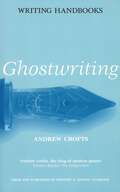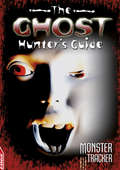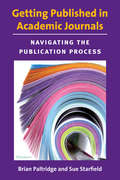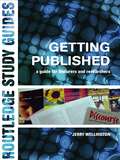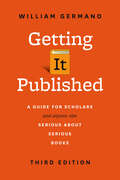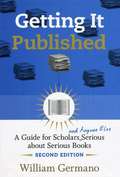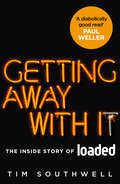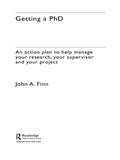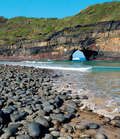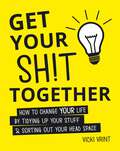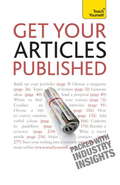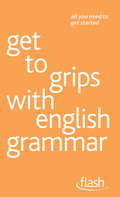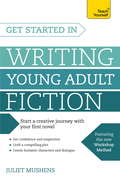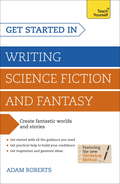- Table View
- List View
GHS label: oxidising (Large Print)
by RnibThis is a pictogram used on containers and workplace hazard warnings, meaning contents are oxidising. It is from the Globally Harmonized System of Classification and Labelling of Chemicals (GHS), an international system, created by the United Nations. There is a locator dot shown, which will be at the top left of the page when the image is the correct way up. The label comprises of a flaming ‘O' on a horizontal bar. This image is inside a red diamond.
GHS label: pressurised gasses (UEB Contracted)
by RnibThis is a pictogram used on containers and workplace hazard warnings, meaning contents are pressurised gasses. It is from the Globally Harmonized System of Classification and Labelling of Chemicals (GHS), an international system, created by the United Nations.. There is a locator dot shown, which will be at the top left of the page when the image is the correct way up. The label comprises of a silhouette of a gas cylinder inside a red diamond. The cylinder points diagonally right with its outlet valve at the right.
GHS label: pressurised gasses (UEB Uncontracted)
by RnibThis is a pictogram used on containers and workplace hazard warnings, meaning contents are pressurised gasses. It is from the Globally Harmonized System of Classification and Labelling of Chemicals (GHS), an international system, created by the United Nations.. There is a locator dot shown, which will be at the top left of the page when the image is the correct way up. The label comprises of a silhouette of a gas cylinder inside a red diamond. The cylinder points diagonally right with its outlet valve at the right.
GHS label: pressurised gasses (Large Print)
by RnibThis is a pictogram used on containers and workplace hazard warnings, meaning contents are pressurised gasses. It is from the Globally Harmonized System of Classification and Labelling of Chemicals (GHS), an international system, created by the United Nations.. There is a locator dot shown, which will be at the top left of the page when the image is the correct way up. The label comprises of a silhouette of a gas cylinder inside a red diamond. The cylinder points diagonally right with its outlet valve at the right.
Ghostwriting (Writing Handbooks #36)
by Andrew CroftsGhostwriting is a thriving, secretive industry. As a ghostwriter you can create best-selling books for film stars, footballers, pop singers, presidents, business tycoons, gangsters, gurus, spies, mercenaries, courtesans, four-star generals, royals and anyone else with an interesting story to tell. This book reveals all the essential secrets of how to turn ghostwriting into a successful and lucrative career. Andrew Crofts has ghosted more than forty books, many of them international bestsellers, including Sold by Zana Muhsen (nearly 4 million copies sold), The Kid by Kevin Lewis, Heroine of the Desert by Donya Al-Nahi, Kathy and Me by Gillian Taylforth and Crocodile Shoes by Jimmy Nail.
The Ghost Hunter's Guide (EDGE: Monster Tracker #3)
by Charles BouvierOver thousands of year, tales of creatures lurking in the night have haunted people's dreams. Arm yourself against the spirits of the night with the Ghost Hunter's Guide.A fantastically visual series of books, the Monster Tracker's Guides will chill as well as entertain.
Getting Published in Academic Journals: Navigating the Publication Process
by Brian Richard Paltridge Sue StarfieldThe pressure on graduate students and new PhDs to publish their work continues to grow with writing and publishing considered an important measure of career success within the academy. There is, however, more to the process of getting published than those who are new to the process initially realize. The aim of this guide is to clarify the process and offer advice. Getting Published in Academic Journals is written for graduate students and newly graduated PhDs who want to publish their research in peer-reviewed academic journals. Getting Published in Academic Journals draws on the experiences of the authors’ as editors of peer-reviewed journals, as teachers of writing-for-publication courses and workshops, as researchers of the scholarly publication process, as reviewers of hundreds of articles, and as published authors. The book is written to be used in courses and workshops on publishing, as a supplement to the books in the revised and updated English in Today’s Research World (Swales & Feak) series, and as a stand-alone guide for academic writers working by themselves.
Getting Published: A Guide for Lecturers and Researchers
by Jerry WellingtonThis handy guide for new and practising lecturers and researchers takes a rare insider's look at the activities of writing and publishing. Turning the spotlight inwards, it examines how and why professionals communicate with each other through writing and publishing.Written with great verve and pace, the author succeeds in providing sensible advice bolstered by many illustrative examples, case studies and anecdotes. For the academic needing insight into the serious business of getting published, this book will provide answers to many of their frequent questions:* Why do they write and publish?* Who are they writing for?* What channels of communication are available for their writing?* Who 'controls' these channels?* How can they successfully submit articles and papers to journals and newspapers, contribute chapters to books, or approach publishers with book proposals?Developed from a series of seminars on the subject by the author, this book will be an enjoyable and informative guide to anyone with an interest in getting their work published.
Getting Published: A Guide for Lecturers and Researchers
by Jerry WellingtonThis handy guide for new and practising lecturers and researchers takes a rare insider's look at the activities of writing and publishing. Turning the spotlight inwards, it examines how and why professionals communicate with each other through writing and publishing.Written with great verve and pace, the author succeeds in providing sensible advice bolstered by many illustrative examples, case studies and anecdotes. For the academic needing insight into the serious business of getting published, this book will provide answers to many of their frequent questions:* Why do they write and publish?* Who are they writing for?* What channels of communication are available for their writing?* Who 'controls' these channels?* How can they successfully submit articles and papers to journals and newspapers, contribute chapters to books, or approach publishers with book proposals?Developed from a series of seminars on the subject by the author, this book will be an enjoyable and informative guide to anyone with an interest in getting their work published.
Getting It Published, Third Edition: A Guide for Scholars and Anyone Else Serious about Serious Books (Chicago Guides to Writing, Editing, and Publishing)
by William GermanoFor more than a decade, writers have turned to William Germano for his insider’s take on navigating the world of scholarly publishing. A professor, author, and thirty-year veteran of the book industry, Germano knows what editors want and what writers need to know to get their work published. Today there are more ways to publish than ever, and more challenges to traditional publishing. This ever-evolving landscape brings more confusion for authors trying to understand their options. The third edition of Getting It Published offers the clear, practicable guidance on choosing the best path to publication that has made it a trusted resource, now updated to include discussions of current best practices for submitting a proposal, of the advantages and drawbacks of digital publishing, and tips for authors publishing textbooks and in open-access environments. Germano argues that it’s not enough for authors to write well—they also need to write with an audience in mind. He provides valuable guidance on developing a compelling book proposal, finding the right publisher, evaluating a contract, negotiating the production process, and, finally, emerging as a published author. “This endlessly useful and expansive guide is every academic’s pocket Wikipedia: a timely, relevant, and ready resource on scholarly publishing, from the traditional monograph to the digital e-book. I regularly share it, teach it, and consult it myself, whenever I have a question on titling a chapter, securing a permission, or negotiating a contract. Professional advice simply does not get any savvier than this pitch-perfect manual on how to think like a publisher.”—Diana Fuss, Princeton University
Getting It Published, 2nd Edition: A Guide for Scholars and Anyone Else Serious about Serious Books (Chicago Guides to Writing, Editing, and Publishing)
by William GermanoSince 2001 William Germano’s Getting It Published has helped thousands of scholars develop a compelling book proposal, find the right academic publisher, evaluate a contract, handle the review process, and, finally, emerge as published authors. But a lot has changed in the past seven years. With the publishing world both more competitive and more confusing—especially given the increased availability of electronic resources—this second edition of Germano’s best-selling guide has arrived at just the right moment. As he writes in a new chapter, the “via electronica” now touches every aspect of writing and publishing. And although scholars now research, write, and gain tenure in a digital world, they must continue to ensure that their work meets the requirements of their institutions and the needs of their readers. Germano, a veteran editor with experience in both the university press and commercial worlds, knows this audience. This second edition will teach readers how to think about, describe, and pitch their manuscripts before they submit them. They’ll discover the finer points of publishing etiquette, including how to approach a busy editor and how to work with other publishing professionals on matters of design, marketing, and publicity. In a new afterword, they’ll also find helpful advice on what they can—and must—do to promote their work. A true insider’s guide to academic publishing, the second edition of Getting It Published will help authors understand what to expect from the publishing process, from manuscript to finished book and beyond.
Getting It Published: A Guide for Scholars and Anyone Else Serious about Serious Books, Third Edition (Chicago Guides to Writing, Editing, and Publishing)
by William GermanoFor more than a decade, writers have turned to William Germano for his insider’s take on navigating the world of scholarly publishing. A professor, author, and thirty-year veteran of the book industry, Germano knows what editors want and what writers need to know to get their work published. Today there are more ways to publish than ever, and more challenges to traditional publishing. This ever-evolving landscape brings more confusion for authors trying to understand their options. The third edition of Getting It Published offers the clear, practicable guidance on choosing the best path to publication that has made it a trusted resource, now updated to include discussions of current best practices for submitting a proposal, of the advantages and drawbacks of digital publishing, and tips for authors publishing textbooks and in open-access environments. Germano argues that it’s not enough for authors to write well—they also need to write with an audience in mind. He provides valuable guidance on developing a compelling book proposal, finding the right publisher, evaluating a contract, negotiating the production process, and, finally, emerging as a published author. “This endlessly useful and expansive guide is every academic’s pocket Wikipedia: a timely, relevant, and ready resource on scholarly publishing, from the traditional monograph to the digital e-book. I regularly share it, teach it, and consult it myself, whenever I have a question on titling a chapter, securing a permission, or negotiating a contract. Professional advice simply does not get any savvier than this pitch-perfect manual on how to think like a publisher.”—Diana Fuss, Princeton University
Getting It Published: A Guide for Scholars and Anyone Else Serious about Serious Books, Third Edition (Chicago Guides to Writing, Editing, and Publishing)
by William GermanoFor more than a decade, writers have turned to William Germano for his insider’s take on navigating the world of scholarly publishing. A professor, author, and thirty-year veteran of the book industry, Germano knows what editors want and what writers need to know to get their work published. Today there are more ways to publish than ever, and more challenges to traditional publishing. This ever-evolving landscape brings more confusion for authors trying to understand their options. The third edition of Getting It Published offers the clear, practicable guidance on choosing the best path to publication that has made it a trusted resource, now updated to include discussions of current best practices for submitting a proposal, of the advantages and drawbacks of digital publishing, and tips for authors publishing textbooks and in open-access environments. Germano argues that it’s not enough for authors to write well—they also need to write with an audience in mind. He provides valuable guidance on developing a compelling book proposal, finding the right publisher, evaluating a contract, negotiating the production process, and, finally, emerging as a published author. “This endlessly useful and expansive guide is every academic’s pocket Wikipedia: a timely, relevant, and ready resource on scholarly publishing, from the traditional monograph to the digital e-book. I regularly share it, teach it, and consult it myself, whenever I have a question on titling a chapter, securing a permission, or negotiating a contract. Professional advice simply does not get any savvier than this pitch-perfect manual on how to think like a publisher.”—Diana Fuss, Princeton University
Getting It Published: A Guide for Scholars and Anyone Else Serious about Serious Books, Third Edition (Chicago Guides to Writing, Editing, and Publishing)
by William GermanoFor more than a decade, writers have turned to William Germano for his insider’s take on navigating the world of scholarly publishing. A professor, author, and thirty-year veteran of the book industry, Germano knows what editors want and what writers need to know to get their work published. Today there are more ways to publish than ever, and more challenges to traditional publishing. This ever-evolving landscape brings more confusion for authors trying to understand their options. The third edition of Getting It Published offers the clear, practicable guidance on choosing the best path to publication that has made it a trusted resource, now updated to include discussions of current best practices for submitting a proposal, of the advantages and drawbacks of digital publishing, and tips for authors publishing textbooks and in open-access environments. Germano argues that it’s not enough for authors to write well—they also need to write with an audience in mind. He provides valuable guidance on developing a compelling book proposal, finding the right publisher, evaluating a contract, negotiating the production process, and, finally, emerging as a published author. “This endlessly useful and expansive guide is every academic’s pocket Wikipedia: a timely, relevant, and ready resource on scholarly publishing, from the traditional monograph to the digital e-book. I regularly share it, teach it, and consult it myself, whenever I have a question on titling a chapter, securing a permission, or negotiating a contract. Professional advice simply does not get any savvier than this pitch-perfect manual on how to think like a publisher.”—Diana Fuss, Princeton University
Getting It Published: A Guide for Scholars and Anyone Else Serious about Serious Books, Third Edition (Chicago Guides to Writing, Editing, and Publishing)
by William GermanoFor more than a decade, writers have turned to William Germano for his insider’s take on navigating the world of scholarly publishing. A professor, author, and thirty-year veteran of the book industry, Germano knows what editors want and what writers need to know to get their work published. Today there are more ways to publish than ever, and more challenges to traditional publishing. This ever-evolving landscape brings more confusion for authors trying to understand their options. The third edition of Getting It Published offers the clear, practicable guidance on choosing the best path to publication that has made it a trusted resource, now updated to include discussions of current best practices for submitting a proposal, of the advantages and drawbacks of digital publishing, and tips for authors publishing textbooks and in open-access environments. Germano argues that it’s not enough for authors to write well—they also need to write with an audience in mind. He provides valuable guidance on developing a compelling book proposal, finding the right publisher, evaluating a contract, negotiating the production process, and, finally, emerging as a published author. “This endlessly useful and expansive guide is every academic’s pocket Wikipedia: a timely, relevant, and ready resource on scholarly publishing, from the traditional monograph to the digital e-book. I regularly share it, teach it, and consult it myself, whenever I have a question on titling a chapter, securing a permission, or negotiating a contract. Professional advice simply does not get any savvier than this pitch-perfect manual on how to think like a publisher.”—Diana Fuss, Princeton University
Getting It Published: A Guide for Scholars and Anyone Else Serious about Serious Books, Third Edition (Chicago Guides to Writing, Editing, and Publishing)
by William GermanoFor more than a decade, writers have turned to William Germano for his insider’s take on navigating the world of scholarly publishing. A professor, author, and thirty-year veteran of the book industry, Germano knows what editors want and what writers need to know to get their work published. Today there are more ways to publish than ever, and more challenges to traditional publishing. This ever-evolving landscape brings more confusion for authors trying to understand their options. The third edition of Getting It Published offers the clear, practicable guidance on choosing the best path to publication that has made it a trusted resource, now updated to include discussions of current best practices for submitting a proposal, of the advantages and drawbacks of digital publishing, and tips for authors publishing textbooks and in open-access environments. Germano argues that it’s not enough for authors to write well—they also need to write with an audience in mind. He provides valuable guidance on developing a compelling book proposal, finding the right publisher, evaluating a contract, negotiating the production process, and, finally, emerging as a published author. “This endlessly useful and expansive guide is every academic’s pocket Wikipedia: a timely, relevant, and ready resource on scholarly publishing, from the traditional monograph to the digital e-book. I regularly share it, teach it, and consult it myself, whenever I have a question on titling a chapter, securing a permission, or negotiating a contract. Professional advice simply does not get any savvier than this pitch-perfect manual on how to think like a publisher.”—Diana Fuss, Princeton University
Getting Away With It (Updated Edition): The Inside Story of Loaded
by Tim SouthwellThe story of loaded is one of the most remarkable in British publishing history. When it launched in 1994 the men's magazine market was full of snooty and condescending fashion journals. Irreverent, adventurous and above all funny, loaded hit the newsstands like a publishing hurricane. Things would never be the same again. Tim Southwell and his motley colleagues soon found themselves having the time of their lives. They wrote about whatever they wanted - a heady cocktail of football, going on holiday, girls, getting drunk - a shameless 24 hour celebration of life. By the fifth issue loaded circulation hit the 100,000 mark, making them market leaders. The team were as surprised as everyone else - you could have the best fun ever and be successful! In an intelligent and incisive book, now updated with new material, Tim Southwell traces an incredible story. From the early days of playing golf in the office and fantasising about how great it would be if they really had their own magazine, to the night they won magazine of the year, and finally to the question of whether the dream could last forever...
Getting a PhD: An Action Plan to Help Manage Your Research, Your Supervisor and Your Project
by John FinnThis highly practical guide provides information that will help research students avoid needless mistakes. It informs and advises you about many of the important facets of postgraduate research, including: what it means to conduct research at doctoral level the requirements for independence, contribution to knowledge, originality and suitability for publication planning a research project over a period of time responsible research practice criteria used in the examination of a PhD. Getting a PhD is an essential handbook for PhD students and provides plenty of useful advice for Masters students or undergraduates conducting a research project.
Getting a PhD: An Action Plan to Help Manage Your Research, Your Supervisor and Your Project
by John FinnThis highly practical guide provides information that will help research students avoid needless mistakes. It informs and advises you about many of the important facets of postgraduate research, including: what it means to conduct research at doctoral level the requirements for independence, contribution to knowledge, originality and suitability for publication planning a research project over a period of time responsible research practice criteria used in the examination of a PhD. Getting a PhD is an essential handbook for PhD students and provides plenty of useful advice for Masters students or undergraduates conducting a research project.
Getaway Guide Eastern Cape & Wild Coast
by Michael BrettThe Eastern Cape province has something to offer every visitor, whether you are looking for a relaxed beach holiday or a close encounter with wildlife, a cultural experience or a trip back into history. The province contains areas of almost unrivalled natural beauty and the range of landscape and vegetation types is simply incredible, from the snowy mountains of the Drakensberg, the wide open arid plains and rugged mountains of the Karoo, gently rolling grassy hills with forest patches tucked into their valleys, and deeply incised, thicket crowded river valleys, not to forget the finest sandy beaches set on a pristine coastline. This authoritative and comprehensive guide contains up-to-date information that will help you to make the most of your visit to this region. This guide includes: • Background information on the province's geography, climate, people and culture • Ten regional chapters from Tsitsikamma to the mountainous interior • Over 50 maps, including a map of each region, all the major towns and most of the smaller towns • The latest info on national parks and provincial reserves • Accommodation options from camping sites and backpackers' lodges to guesthouses and hotels that will suit all budgets • Where to eat and where to shop
Get Your Shit Together: How to Change Your Life by Tidying up Your Stuff and Sorting Out Your Head Space
by Vicki Vrint'The secret of getting ahead is getting started.' Mark TwainOrganise your stuff and organise your life – you'll soon see the results.This book tells you exactly how to get your sh*t together, so you can be the best version of yourself.Use its winning blend of super-achievable life hacks, motivating quotations and lots of good sh*t to kick-start your transformation.
Get Your Articles Published: How to write great non-fiction for publication (Teach Yourself)
by Lesley BownGet Your Articles Published is a practical step-by-step guide offering you the information you to learn about the market, requirements, practicalities and skills needed to write on a freelance basis for magazines, it covers all major genres from mainstream and lifestyle through to more specialised subject areas. With plenty of information on legalities and logistics, such as writing to deadlines, the material is also accompanied by a range of useful resources, from websites to books and relevant writers' societies. By the end of this book, you will know how to research not only your subject but also your target publication and its readers, benefit from insider hints and tips from industry professionals and learn how and what to submit and to whom.NOT GOT MUCH TIME?One, five and ten-minute introductions to key principles to get you started.AUTHOR INSIGHTSLots of instant help with common problems and quick tips for success, based on the author's many years of experience.TEST YOURSELFTests in the book and online to keep track of your progress.EXTEND YOUR KNOWLEDGEExtra online articles at www.teachyourself.com to give you a richer understanding of getting your articles published.FIVE THINGS TO REMEMBERQuick refreshers to help you remember the key facts.TRY THISInnovative exercises illustrate what you've learnt and how to use it.
Get to grips with english grammar: Get To Grips With English Grammar (Flash)
by Ron SimpsonThe books in this bite-sized new series contain no complicated techniques or tricky materials, making them ideal for the busy, the time-pressured or the merely curious. Get To Grips With English Grammar is a short, simple and to-the-point guide to English grammar. In just 96 pages, the reader will learn all they need to write clear, correct English. Ideal for the busy, the time-pressured or the merely curious, Get To Grips With English Grammar is a quick, no-effort way to break into this fascinating topic
Get Started in Writing Young Adult Fiction: How to write inspiring fiction for young readers
by Juliet MushensLearn how to write young adult fiction with imagination and verve.This is an authoritative and engaging introduction to writing young adult fiction for the complete beginner. It will help you understand how the genre works, the big do's and don't's - as well as giving you the inspiration and motivation you actually need to write. Written by a leading literary agent who knows what it takes to make it in this market, this book will give you the advice and tips you need to stand out. An essential book for anyone hoping to emulate the success and addictive qualities that characterize books like The Hunger Games, Twilight, Divergent and The Fault in Our Stars.ABOUT THE SERIESThe Teach Yourself Creative Writing series helps aspiring authors tell their story. Covering a range of genres from science fiction and romantic novels, to illustrated children's books and comedy, this series is packed with advice, exercises and tips for unlocking creativity and improving your writing. And because we know how daunting the blank page can be, we set up the Just Write online community at tyjustwrite, for budding authors and successful writers to connect and share.
Get Started in Writing Science Fiction and Fantasy: How to write compelling and imaginative sci-fi and fantasy fiction
by Adam RobertsYOUR COMPLETE GUIDE TO WRITING AWESOME AND AMAZING FICTION FROM ANOTHER DIMENSION.This is an authoritative and engaging introduction to writing science fiction and fantasy for the complete beginner. This book provides all the information, guidance, and advice you need to write great science fiction to captivate your readers. It will help you understand how the genre works, the big dos and don'ts - as well as giving you the inspiration and motivation you actually need to write. Written by a leading science fiction novelist and a Professor in Creative Writing at the University of London - you'll discover how to let your creativity flow, create incredible worlds, and get your novel finished.ABOUT THE SERIESThe Teach Yourself Creative Writing series helps aspiring authors tell their story. Covering a range of genres from science fiction and romantic novels, to illustrated children's books and comedy, this series is packed with advice, exercises and tips for unlocking creativity and improving your writing. And because we know how daunting the blank page can be, we set up the Just Write online community at tyjustwrite, for budding authors and successful writers to connect and share.

